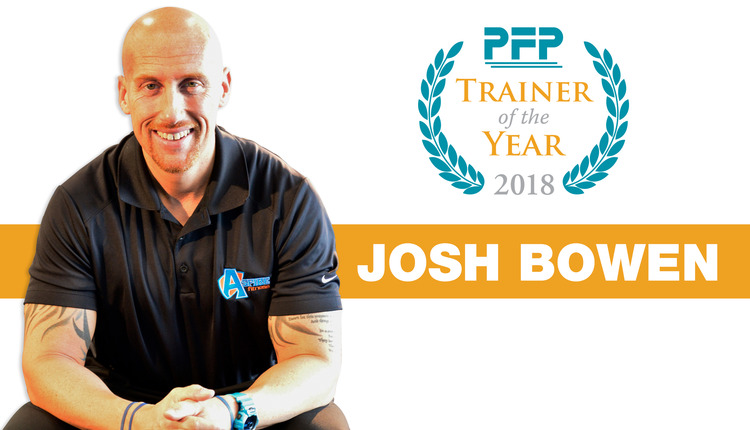As Americans have continued to eat more and exercise less over the past decade, health and fitness experts have focused their efforts on inspiring healthful change one individual at a time. Unfortunately, this approach has not improved the nation’s obesity crisis, nor has it increased adherence to healthful eating habits and regular physical activity programs. The very environment we live in may be one of the greatest contributing factors to the problem.
Fortunately, policymakers at all levels of government have taken note of this dilemma. With steps ranging from a trans fat ban in California restaurants to mandatory nutrition labeling in New York, regulators are changing federal and state policies to improve the health of the nation. IDEA Fitness Journal, the award-winning flagship publication of IDEA Health & Fitness Association, recently covered these policies in a comprehensive feature story that gets to the bottom of what’s being done.
The article reviews policy that has been implemented or set in motion for the future on the following points:
Taxation. Imposing higher taxes on calorie-dense and nutrient-poor foods might lower consumption of unhealthy foods and generate revenue to subsidize programs that promote better choices.
Food Prohibitions. Municipalities are finding ways to prohibit harmful ingredients in foods that pose a risk to the public’s health. New York City was the first U.S. city to impose a trans fat ban in all city restaurants, effective July 2008. Soon after, California passed a statewide restaurant ban on trans fat, which eateries must comply with by January 1, 2010. Boston, Philadelphia and several other jurisdictions have since followed suit.
Regulating the Food Marketed to Youth. A strategy that targets kids’ health in particular calls for restricting food advertising during children’s programs; funding counteradvertising to promote good nutrition and physical activity; and limiting use of cartoon characters. Although it may be unconstitutional to place an outright ban on ads for unhealthy foods, public pressure has inspired some manufacturers to self-regulate their products.
School Policies. Many school districts in the nation have already removed vending machines, provided healthier menus and offered more physical activity opportunities for schoolchildren. However, much work remains to be done. Over the past few years, several policies have been implemented to make the school environment healthier.
The “Built” Environment. Yet another strategy for change involves creating zoning laws to limit the number of fast-food restaurants, expand recreational facilities and encourage healthier lifestyles in given areas. Such measures would especially benefit people living in poor neighborhoods where access to parks and healthy foods is severely limited.
Disclosure. The strategy of disclosure requires restaurants and food manufacturers to provide nutritional content information and health warnings so that consumers can make more informed decisions. While this strategy is currently applied only at the city and state level, it is conceivable that the federal government could enact disclosure requirements at a national level.
Tort Liability. Another tactic used to enforce change is filing lawsuits against companies like fast-food giants for selling “unreasonably hazardous” products. The theory is that legal action will force companies to voluntarily offer healthier alternatives and provide accurate information.
Surveillance. In much the same way as health departments monitor infectious disease, states could begin monitoring chronic diseases linked to obesity, such as diabetes.
The article also includes a call to action for grass roots activism and a list of resources and ideas for how to affect change in your community. The entire article “The Latest Nutrition & Activity Policies” is available at http://www.ideafit.com/fitness-library/nutrition-story.
IDEA Health & Fitness Association is a leading membership organization of fitness and wellness professionals with more than 23,000 members in over 80 countries. For more information, visit http://www.ideafit.com.
Fortunately, policymakers at all levels of government have taken note of this dilemma. With steps ranging from a trans fat ban in California restaurants to mandatory nutrition labeling in New York, regulators are changing federal and state policies to improve the health of the nation. IDEA Fitness Journal, the award-winning flagship publication of IDEA Health & Fitness Association, recently covered these policies in a comprehensive feature story that gets to the bottom of what’s being done.
The article reviews policy that has been implemented or set in motion for the future on the following points:
Taxation. Imposing higher taxes on calorie-dense and nutrient-poor foods might lower consumption of unhealthy foods and generate revenue to subsidize programs that promote better choices.
Food Prohibitions. Municipalities are finding ways to prohibit harmful ingredients in foods that pose a risk to the public’s health. New York City was the first U.S. city to impose a trans fat ban in all city restaurants, effective July 2008. Soon after, California passed a statewide restaurant ban on trans fat, which eateries must comply with by January 1, 2010. Boston, Philadelphia and several other jurisdictions have since followed suit.
Regulating the Food Marketed to Youth. A strategy that targets kids’ health in particular calls for restricting food advertising during children’s programs; funding counteradvertising to promote good nutrition and physical activity; and limiting use of cartoon characters. Although it may be unconstitutional to place an outright ban on ads for unhealthy foods, public pressure has inspired some manufacturers to self-regulate their products.
School Policies. Many school districts in the nation have already removed vending machines, provided healthier menus and offered more physical activity opportunities for schoolchildren. However, much work remains to be done. Over the past few years, several policies have been implemented to make the school environment healthier.
The “Built” Environment. Yet another strategy for change involves creating zoning laws to limit the number of fast-food restaurants, expand recreational facilities and encourage healthier lifestyles in given areas. Such measures would especially benefit people living in poor neighborhoods where access to parks and healthy foods is severely limited.
Disclosure. The strategy of disclosure requires restaurants and food manufacturers to provide nutritional content information and health warnings so that consumers can make more informed decisions. While this strategy is currently applied only at the city and state level, it is conceivable that the federal government could enact disclosure requirements at a national level.
Tort Liability. Another tactic used to enforce change is filing lawsuits against companies like fast-food giants for selling “unreasonably hazardous” products. The theory is that legal action will force companies to voluntarily offer healthier alternatives and provide accurate information.
Surveillance. In much the same way as health departments monitor infectious disease, states could begin monitoring chronic diseases linked to obesity, such as diabetes.
The article also includes a call to action for grass roots activism and a list of resources and ideas for how to affect change in your community. The entire article “The Latest Nutrition & Activity Policies” is available at http://www.ideafit.com/fitness-library/nutrition-story.
IDEA Health & Fitness Association is a leading membership organization of fitness and wellness professionals with more than 23,000 members in over 80 countries. For more information, visit http://www.ideafit.com.







